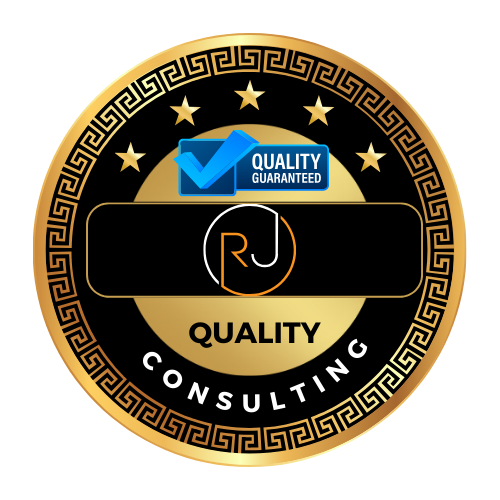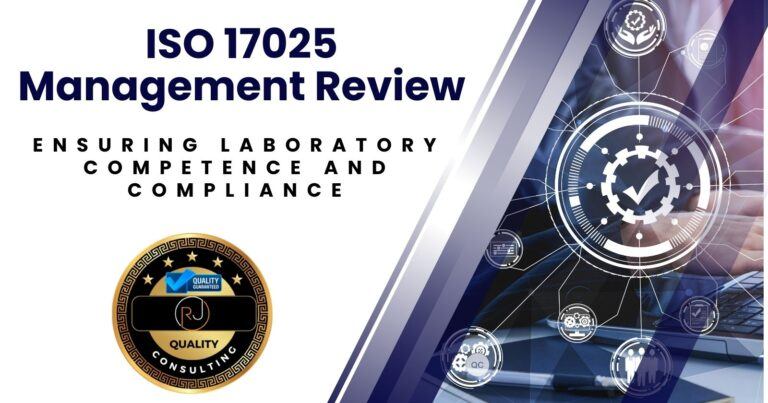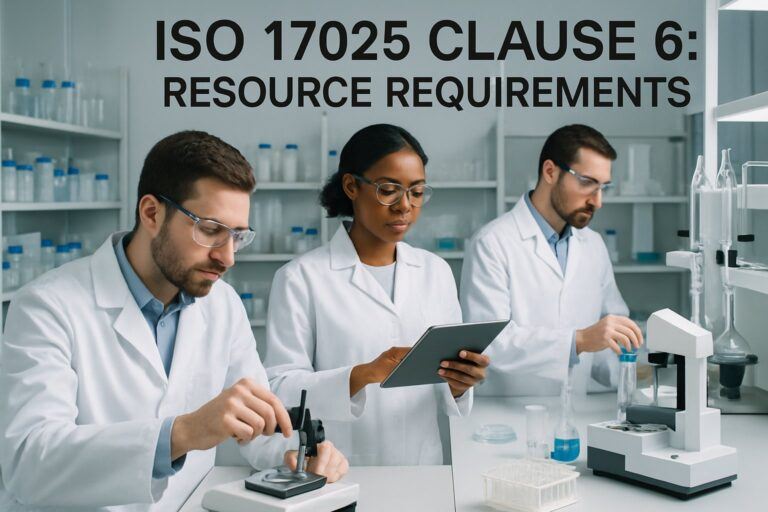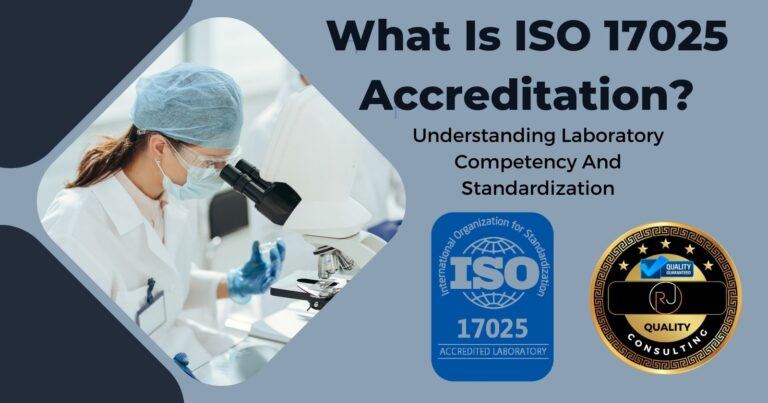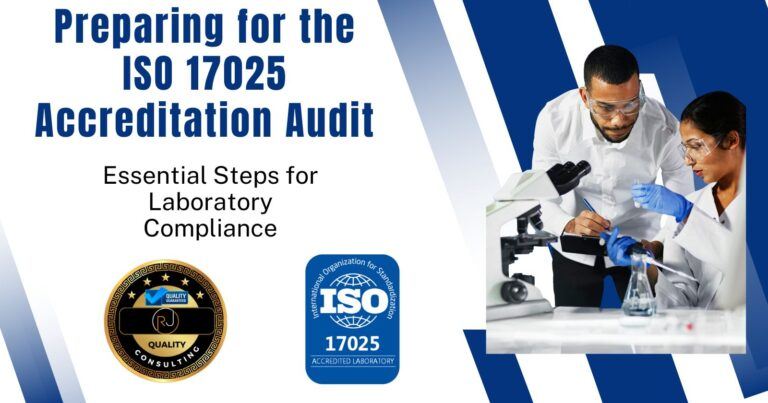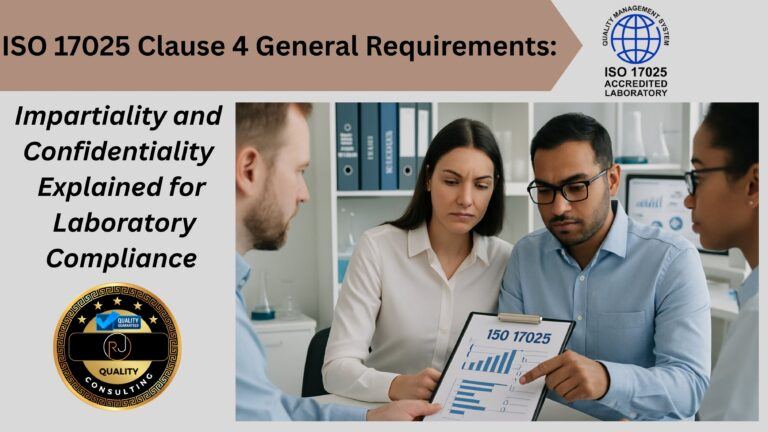ISO 17025 Clauses Explained: Complete Guide For Laboratory Accreditation
ISO/IEC 17025 is the international standard that labs follow to demonstrate technical competence and quality of their testing and calibration results. For laboratory managers, quality managers, and lab owners, understanding the ISO 17025 clauses and how they are structured is essential. As a certified ISO/IEC 17025 assessor for a major accreditation body under ILAC, I have seen firsthand how a clear grasp of these clauses helps labs maintain compliance and improve overall performance.
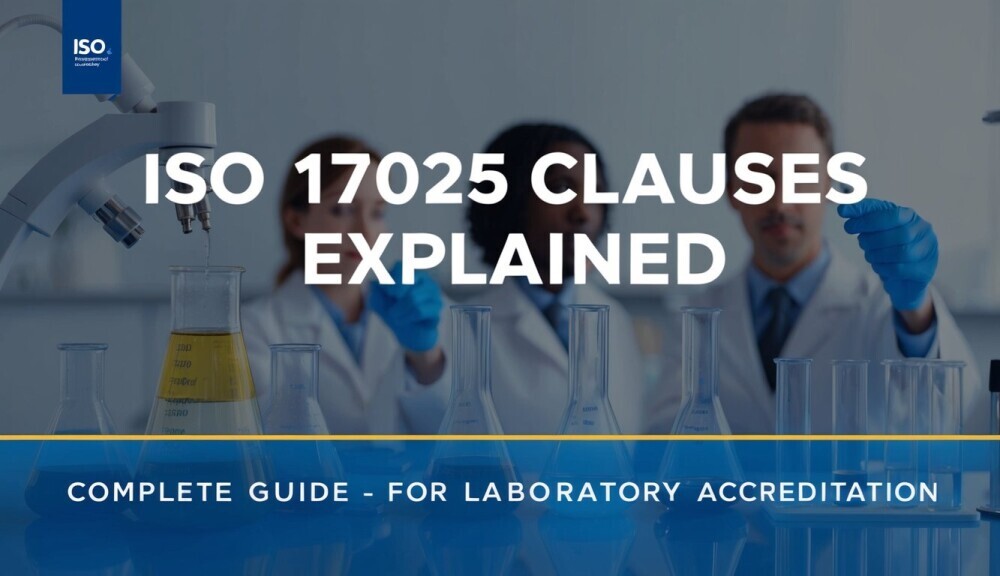
What are the Main ISO 17025 Clauses?
The ISO 17025 standard covers everything from impartiality to detailed management systems. For labs striving for excellence, knowing these clauses isn’t just about ticking boxes. It means building an environment where unbiased decisions, proper resource management, and clear processes ensure that testing and calibration results are accurate. In this article, I break down the main clauses – specifically Clauses 4 through 8 – to help you understand each aspect and see how it applies practically in everyday lab operations. To add more depth, I also discuss additional strategies that labs can adopt, offering real-world examples and extra guidance on integrating these standards into daily practices.
ISO 17025 Clause 4 – General Requirements
Prefer to watch? Here’s a video walkthrough of the ISO 17025 Clause 4 requirements, including real-world audit tips.
📘 ISO/IEC 17025 Quality Manual Template
Accelerate your lab’s accreditation process with our comprehensive Quality Manual Template, designed to align with ISO/IEC 17025:2017 standards.
- Fully editable and customizable to fit your laboratory’s needs.
- Includes all necessary procedures, forms, and policies.
- Structured to facilitate easy implementation and compliance.
- Developed by experts with extensive ISO/IEC 17025 experience.
Impartiality and Confidentiality
This clause focuses on maintaining objectivity in all lab activities and ensuring confidential information is protected. By avoiding conflicts of interest, labs can guarantee that their results are not influenced by external pressures. Laboratories should establish clear impartiality agreements among staff, define restrictions regarding conflicts of interest, and implement strict data access controls to protect client information.
For example, a lab may set up firewalls and dedicated secure databases to ensure that sensitive client data is only accessible to authorized personnel. In my experience, such practices not only assure clients but also bolster the internal credibility of the lab. These measures, when consistently applied, help build a culture where every team member understands the importance of keeping personal biases at bay and safeguarding confidential data.
- Confidentiality and Impartiality Agreements: Draft formal guidelines that outline acceptable practices and actions to avoid any conflict of interest. Ensure these are signed by employees and personnel of external providers.
- Data Protection: Use limited access to electronic data and secure physical records.
- Regular Training: Ensure all staff understand the importance of maintaining objectivity and confidentiality.
- Risk to Impartiality on an ongoing basis: Ensure that impartiality events are discussed on an ongoing basis. For example, during Management Review meetings and documenting these discussions is a must.
ISO 17025 Clause 5 – Structural Requirements
This section of ISO 17025 focuses on the organizational setup of a lab. It emphasizes having well-defined roles and responsibilities along with a clear reporting structure. Structural requirements ensure that the quality management function operates independently, which is very important for objective assessments. A common example is creating an organizational chart where the Quality Manager reports directly to higher management rather than to operational departments.
This independence helps minimize any potential bias in decision making. For instance, when an incident occurs, an independent quality oversight team is better positioned to take objective corrective actions. Additionally, strong structural setups ensure that every member of the team knows exactly what is expected of them, leading to improved communication and smoother internal operations.
- Organizational Structure: Develop an all-in-one org chart detailing roles and responsibilities.
- Independence of Quality Functions: Ensure that the team responsible for quality assessments is not influenced by other operational departments.
- Roles and Responsibilities: Create process flowcharts or other documentation that explain who is responsible for specific aspects of quality and compliance. You may also consider using ISO 17025 templates to help navigate documentation requirements.
🎥 ISO 17025 Clause 5 – Structural Requirements Explained
Understanding the structure of your laboratory is critical for ISO/IEC 17025 compliance. In the video below, we walk through Clause 5: Structural Requirements, part of our full ISO 17025 Clauses series.
This video explains:
- What ISO 17025 Clause 5 requires
- How to document your lab’s legal and management structure
- What auditors look for regarding impartiality and authority
👇 Watch now to strengthen your lab’s foundation for accreditation:
ISO 17025 Clause 6 – Resource Requirements
This clause addresses the need for adequate and competent resources for lab activities. Resources refer to staff expertise, equipment, and even external suppliers needed to maintain the quality of test results. Ensuring that calibration equipment is regularly maintained, for example, is vital for accuracy.
An accredited lab might schedule routine checks for its testing equipment or contract an accredited facility for equipment calibration. Investing in effective resource management pays off through improved test reliability and client satisfaction. In my career, I have observed that well-trained staff combined with properly calibrated tools form the backbone of effective laboratory performance. Further, regularly updating training and investing in modern equipment creates an environment where accuracy and precision are at the forefront of operations.
- Competent Personnel: Hire staff with verified skills and provide ongoing training to keep up with new technologies and methods.
- Equipment and Calibration: Use accredited vendors and laboratories, ensuring equipment is calibrated as per the set standards.
- Supplier Validation: Vet suppliers thoroughly to confirm that all consumables and equipment meet quality assurance criteria.
Absolutely! Here’s a short, professional blog intro you can place just above the embedded Clause 6 video in your blog post titled ISO 17025 Clauses Explained:
📽️ ISO 17025 Clause 6 – Resource Requirements (Video)
Clause 6 of ISO/IEC 17025:2017 outlines the resource requirements necessary for a laboratory to consistently produce valid results. In the video below, I break down each subclause—from personnel competence and facility conditions to equipment calibration and traceability—with practical examples and auditor insights.
🎥 Watch this video to better understand how your lab can meet the expectations of Clause 6 and ensure readiness for accreditation.
ISO 17025Clause 7 – Process Requirements
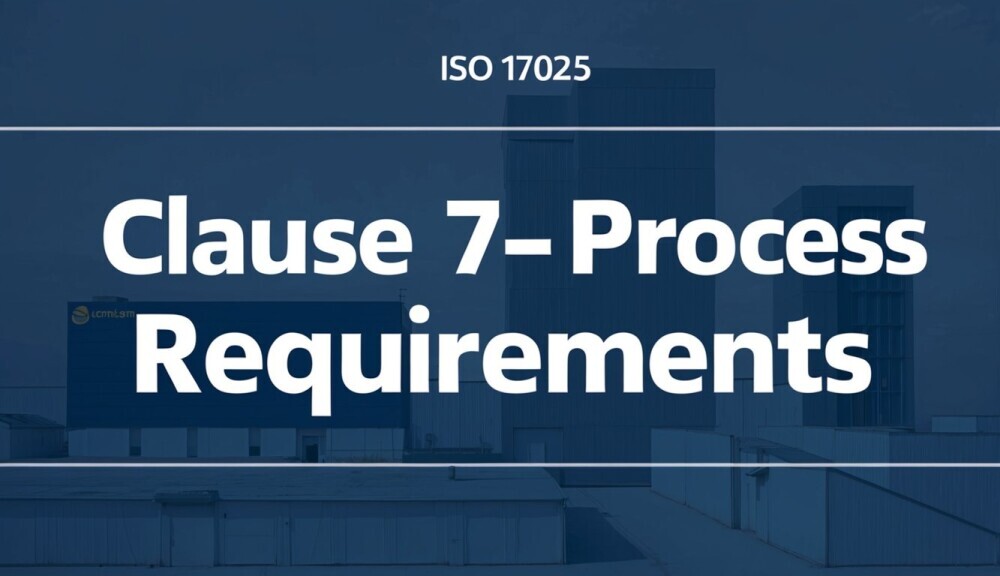
This clause touches on the entire spectrum of lab operations. It details how testing methods need to be validated, how samples should be handled, and the procedures for reporting results. Structured processes lead to consistent and reproducible outcomes. Labs often implement rigorous documentation practices as a part of this clause.
For instance, when participating in proficiency testing, every sample is given a unique identifier to maintain traceability throughout the testing process. Process requirements also include method validation, ensuring that techniques are both accurate and repeatable, which ultimately adds to the lab’s reliability. Expanding on this, many labs adopt internal review mechanisms that continuously monitor process effectiveness and incorporate improvements based on feedback and evolving industry standards.
- Method Validation: Establish detailed procedures to test the reliability and repeatability of the methods used.
- Sample Handling: Develop protocols for the proper collection, storage, and transport of samples.
- Quality Control: Regularly participate in proficiency testing schemes and maintain extensive records.
- Reporting: Ensure that the final analysis is clear, accurate, and well documented for stakeholder review.
Technical vs Nontechnical Elements in ISO 17025 Clauses 6 and 7
ISO 17025 clauses 6 and 7 include a mix of technical and nontechnical requirements, and it’s important for labs to understand the difference. Technical elements focus on the hands-on aspects of laboratory operations—these include Clause 6.2 (personnel), 6.3 (facilities), 6.4 (equipment), 6.5 (metrological traceability), and Clause 7.2 through 7.8 (covering methods, sampling, handling, records, uncertainty, and validity of results). Meanwhile, nontechnical elements—like 6.1 (resource planning), 6.6 (supplier management), and 7.1, 7.9–7.11 (contract review, complaints, nonconforming work, and data control)—deal more with administrative processes and quality oversight.
As an assessor, I approach these two categories very differently, and so do other assessors. For the technical clauses, I audit by witnessing actual lab activities—observing how tests are performed, verifying the use of correct methods, reviewing calibration certificates, environmental conditions, and technical records. This gives me direct evidence that your lab is operating competently and in line with the ISO 17025 technical requirements. These elements are evaluated with a focus on how your people, equipment, and processes function in real time.
In contrast, the nontechnical requirements are usually assessed in a tabletop review. I’ll sit down and go through your procedures, logs, and records—for example, your complaint handling process, supplier approval documentation, or how you manage nonconformities and data integrity. This same approach applies to Clause 8 (the management system), where I review your document control, quality policy, risk register, internal audits, and management review records. Understanding this distinction helps labs prepare better—technical elements need to be demonstrated in the lab, while nontechnical elements are explained and supported through documentation.
🔍 Understanding How ISO 17025 Clauses 6 and 7 Are Audited: Technical vs. Nontechnical Elements
In the video below, I walk you through how accreditation bodies audit Clauses 6 and 7 of ISO/IEC 17025—and why it’s important to understand the difference between the technical and nontechnical subclauses. Here’s a quick summary to help guide your preparation.
ISO 17025 Clause 8 – Management System Requirements
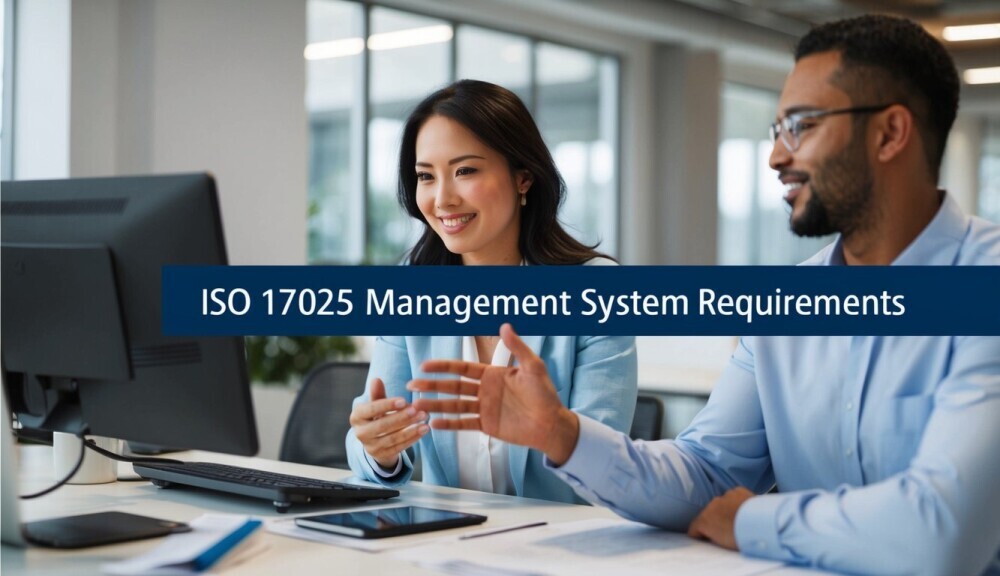
The final clause covers your lab’s management system. This includes everything from the ISO 17025 internal audit to the implementation of corrective actions when needed. A robust management system creates a culture where both risks and opportunities for improvement are continuously identified and managed.
One practical approach is to run periodic internal audits aimed at identifying potential weaknesses in lab operations. For example, a lab might document risks such as power outages affecting refrigeration units and then develop contingency plans to address these concerns. From my professional perspective as an assessor, such practices not only prepare the lab for external audits but also foster a proactive approach to quality management. Moreover, integrating modern digital tools to track audit findings and corrective actions can transform data into actionable insights, improving overall efficiency.
- Internal Audits: Develop audit schedules that verify adherence to all quality processes.
- Corrective Actions: Set up structured procedures to identify and resolve non-conformities.
- Risk-Based Thinking: Implement systems that monitor potential risks and outline strategies to ease up on them.
- Management Reviews: Ensure that top management regularly reviews the performance of the lab’s quality system.
Real-World Applications in Lab Management

Understanding these clauses pays off when managing everyday lab operations. For example, a lab conducting water quality tests might use Clause 6 to choose proper reagents and equipment, ensuring consistency in results. Similarly, a pharmaceutical testing lab benefits greatly from Clause 8 by instituting strict quality control measures and risk management practices.
Many labs also adopt the structure set out in Clause 5 to reinforce the independence of their quality control units. I once assessed a lab where a clear separation of duties allowed the Quality Manager to pinpoint issues without operational bias. This independence is very important in industries where even small errors can lead to significant consequences. By addressing the unique challenges in each lab and tailoring strategies to local conditions, managers can significantly improve operational outcomes and enforce a culture of continuous improvement.
Frequently Asked Questions
Question: What are the main objectives of ISO 17025?
Answer: The main goal is to ensure labs are competent in producing accurate and consistent results. The ISO 17025 clauses guide labs in establishing standardized practices that boost reliability and client trust.
Question: How can a lab demonstrate compliance with these clauses?
Answer: Compliance is shown by having documented procedures, trained staff, certified equipment, and ongoing quality assessments. Routine internal audits and corrective action plans further support compliance.
Question: Why is impartiality important in laboratory testing?
Answer: Impartiality ensures that test results are free of bias. This is very important because even slight influences can lead to inaccurate outcomes and undermine the lab’s reputation.
Question: What steps can labs take to better manage resources under Clause 6?
Answer: Labs should invest in regular staff training, conduct routine equipment maintenance, and work with accredited calibration vendors. Validating suppliers also plays a key role in resource management.
Additional Tips for Implementing ISO 17025 Clauses
Successfully implementing ISO 17025 clauses involves more than simply following guidelines. It requires a cultural shift within the lab. Here are some additional recommendations that labs might find helpful:
- Get Involved: Regularly discuss quality improvement initiatives and encourage everyone to share ideas on how processes can be refined.
- Take Advantage of Technology: Use lab information management systems (LIMS) to monitor and record every aspect of your lab operations. This makes it easier to track performance and identify issues early.
- Schedule Regular Training: Conduct workshops and training sessions that cover updates to ISO 17025 requirements along with practical examples of their application in the field.
- Document Everything: Good record keeping is key. Detailed documentation not only helps during audits but also serves as a valuable resource for continuous improvement.
Wrapping Up
The ISO 17025 clauses provide a clear roadmap for maintaining quality and integrity in laboratory operations. Each clause plays an important role; for example, ensuring impartiality helps maintain unbiased outputs while a robust management system offers guidance on addressing risks and seizing improvement opportunities. As a certified ISO/IEC 17025 assessor for a major accreditation body under ILAC, I have seen labs thrive by taking a systematic approach to these requirements.
Whether you are managing an established lab or planning to step up your current processes, reviewing and aligning your operations with ISO 17025 clauses is a worthwhile investment. It not only improves the quality and accuracy of test results but also builds trust with clients and stakeholders. For more details and the full standard, visit the ISO/IEC 17025:2017 Standard page. Additionally, check out the information available at the ILAC – International Laboratory Accreditation Cooperation website to track down how accredited labs worldwide uphold these principles.
In addition, many laboratories are now integrating advanced digital tools and continuous training programs to further secure their competitive edge and adherence to ISO 17025. By investing in both people and technology, labs can bridge gaps between theoretical guidelines and day-to-day operations. This extra focus on both process and technology allows labs to not only meet industry standards but also to exceed them, ensuring a next-level cool approach to quality control that resonates with stakeholders globally. The ongoing commitment to improvement and rigorous internal review practices paves the way for sustained excellence and operational reliability in an ever-evolving technical landscape.
Also Explore:
ISO 17025 Clause 4 – General Requirements
ISO 17025 Clause 5 – Structural Requirements
🕒 Book Your Free 45-Minute Consultation
Have questions about ISO/IEC 17025 or ISO 9001 implementation or accreditation? Schedule a free 45-minute consultation with me to discuss your Company or laboratory’s needs and how we can achieve compliance together.
Schedule Your Consultation